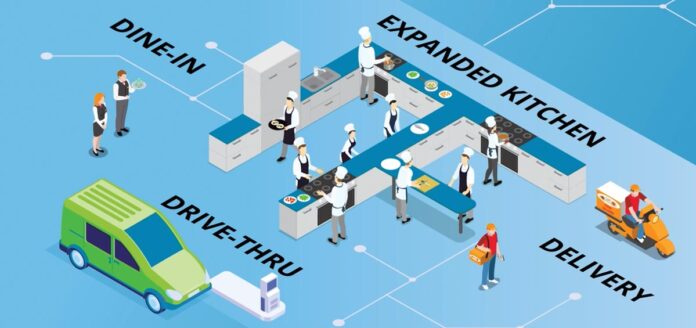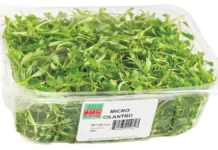
Three recent surveys hit my desk, I’m sharing the trends you need to know about that may impact your business for what you buy, sell and serve in 2022.
According to Gen-Z Specialty Food Consumers: What They Want
Gen-Zs, adults ages 18- 24, are driven to purchase specialty foods from diverse suppliers, small or local companies, and those that are better for the environment, according to the SFA’s Today’s Specialty Food Consumer report, 2021-2022 Edition. The annual report surveyed consumers to understand the demographics, behaviors, usage occasions, and shopping habits by different generations.
Here are highlights of some Gen-Z drivers, preferences, and attitudes that are helpful to makers, buyers, and marketers when trying to reach these consumers.
What Gen-Z’s Want
Top purchase drivers: support smaller and or local/regional companies, better for the environment (upcycled, sustainable, etc.), dietary or health reasons, better for animals, and to support diverse suppliers (e.g., women-,black-, BIPOC-, LGBTQ+-, veteran-, disabled- owned companies).
Top specialty food uses: breakfast, lunch, treats, ingredients to add to something special or upgrade a recipe, ingredients never tried before to follow recipe
Popular retail channels: convenience stores, home stores, department stores
What they value in a store:
- Products from diverse suppliers (e.g., women-,black-, BIPOC-, LGBTQ+-, veteran-, disabled- owned companies)
- In-store cafes/restaurants
- Smaller retail stores that are easier faster to shop in
- Recipe and meal planning tips, solutions
- Grab-and-go or on-the-go items
- Employees are knowledgeable about health and wellness issues
- Company commitment to recycling and reducing packaging waste
- Company commitment to eliminating food waste, composting, and/or selling “ugly” produce
What they value at foodservice:
- Ability to recommend specialty food or beverages to restaurant staff
- Clearly identify menu options that align with special diets that suit lifestyles (e.g., keto, paleo, gluten-free)
- Information about ingredients themselves (e.g., where they come from, what makes these ingredients special)
- Clearly identify plant-based menu options (i.e., free of meat and/or other animal products like cheese and eggs)
Deloitte Details the Restaurant of the Future

The restaurant industry has been on a roller coaster for nearly two years, as changes fueled by COVID-19 continue to unfold at a rapid pace. Deloitte’s recent report, “The Restaurant of the Future: A Vision Evolves,” examines how consumer demand for convenience, digital experiences, and safety are permanently influencing restaurants’ business models.
“The pandemic has accelerated the progress of the restaurant of the future, calling for fundamental shifts in business models to meet new demands,” said Jean Chick, principal, Deloitte Consulting LLP, and U.S. restaurant and food service leader, in a statement. “Now, amid continued pressures in areas like supply chain, safety-related costs, and labor availability costs, restaurants should work strategically to build loyalty among on-premises and off-premises diners. Those that can quickly adapt and meet diners’ evolving demands for convenience, frictionless digital experiences and safety can be poised to not only survive, but thrive.”
The report is based on a survey of 1,000 Americans fielded in September 2021, who had ordered from a restaurant within the last three months.
The key takeaways are:
Interested in: plant based, non-GMO, fair trade, climate friendly, ethical, sustainable; food free of allergens, alternative proteins
Tech habits: Biggest fresh purchasers online. Use phone to order restaurant food, plan meals and build lists, find recipes, pay for food at markets or restaurants, scan products to learn about allergens or nutritional information, order from meal ingredient delivery services.
- Almost two-thirds (64 percent) of consumers do not plan to return to their pre-pandemic habits of dining in restaurants within the next six months.
- Convenient off-premises dining has emerged as a permanent fixture in the restaurant experience: 61 percent of consumers order takeout or delivery at least once per week, up from 29 percent one year ago and 18 percent prior to the pandemic.
- Demand for frictionless digital experiences continues to be at the top of the menu. More than half (57 percent) of consumers ordering takeout or delivery prefer to use a digital app; nearly two-thirds (67 percent) of on-premise diners prefer to order their food digitally.
- One-third of consumers say enhanced cleanliness and safety protocols are important in returning to on-premises dining sooner and more frequently.
Forty-Six Percent Of Consumers Plan To Eat Healthier in 2022 According To New Survey By Nextbite
 Forty-six percent of consumers indicate they want to eat healthier in 2022, making it the most highly-ranked lifestyle change, followed by working out more often and spending less money, according to a new survey by Nextbite, a leader in virtual restaurants. At the same time, 49% of consumers plan to order healthier food for delivery in 2022. In fact, offering healthier food delivery options is the third most motivating way to get consumers to order delivery more often (closely followed by faster delivery times and more food variety).
Forty-six percent of consumers indicate they want to eat healthier in 2022, making it the most highly-ranked lifestyle change, followed by working out more often and spending less money, according to a new survey by Nextbite, a leader in virtual restaurants. At the same time, 49% of consumers plan to order healthier food for delivery in 2022. In fact, offering healthier food delivery options is the third most motivating way to get consumers to order delivery more often (closely followed by faster delivery times and more food variety).
For all ages, eating healthier in 2022 is a top-ranked resolution, including 48% of 18–24-year-olds and 45% of 25–34-year-olds. Eating healthier doesn’t necessarily mean adopting a trendy new diet, as only 6% plan on trying the keto or Whole360 diet.
The momentum and demand for delivery food continues in the coming year. Fifty-nine percent of consumers are currently ordering food for delivery once a month or more and 41% plan to order it more often in 2022. The survey also reported that 33% order food for delivery once a week or more. Consumer delivery demand continues to increase, despite Covid lock-downs disappearing, children returning to school, and adults going back to work in-person. In a Summer 2021 survey, Nextbite found 43% were ordering food at least once a month, and 23% were ordering weekly.
“Restaurants have a huge opportunity in 2022 to adopt virtual menus to reach new customers for delivery and takeout, but also to offer new healthier options consumers crave,” said Nextbite Vice President of Brand Mickey Citarella. “Delivery and takeout are no longer viewed as unhealthy, and it’s important to focus on supplying consumers with fresh options that are both delicious and nutritious. If we do this, we’ll continue to see delivery orders increase.”























